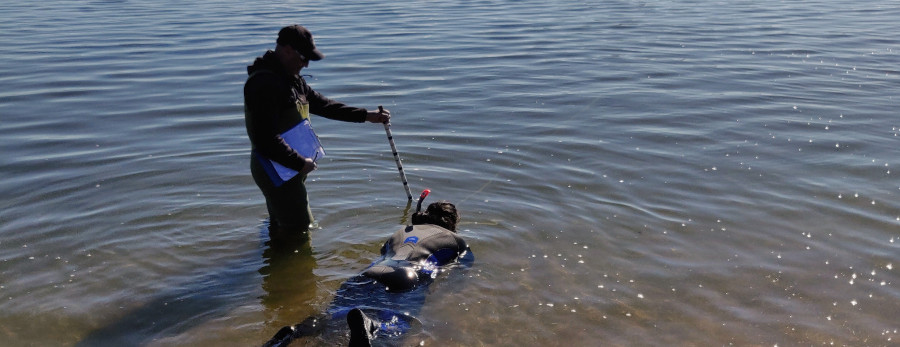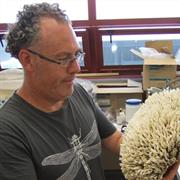Comparing kākahi monitoring methods for iwi use
The use of bathyscopes is currently used by iwi, in particular Te Arawa, to monitor kākahi populations in their lakes.
 The use of bathyscopes is currently used by iwi, in particular Te Arawa, to monitor kākahi populations in their lakes. We found this method resulted in consistently fewer kākahi being observed than snorkelling, though greater safety, simplicity and lack of expense of using a bathyscope provided advantages for that method for iwi usage.
The use of bathyscopes is currently used by iwi, in particular Te Arawa, to monitor kākahi populations in their lakes. We found this method resulted in consistently fewer kākahi being observed than snorkelling, though greater safety, simplicity and lack of expense of using a bathyscope provided advantages for that method for iwi usage.
Associate Professor Ian Duggan (Ngāi Tahu) and his collaborators have published an important new paper investigating kākahi (Echyridella spp.), a freshwater mussel with high cultural significance to Māori, particularly to Te Arawa and Ngāti Tūwharetoa.
Population densities of kākahi are thought to have declined in many locations, and accurate methods to monitor changes in populations are needed. Bathyscopes are currently used by iwi to monitor kākahi populations in lakes Rotorua and Rotoiti. However, it is unclear how accurate this method is for determining abundance changes in kākahi relative to underwater methods, such as snorkelling.
Undergraduate student Siobhan Nuri (Te Arawa) examined mussel densities at ten sites in Lake Rotorua and Lake Rotoiti as part of an Undergraduate Research Project. She found significantly fewer kākahi were observed using a bathyscope relative to snorkelling, although a clear relationship existed between the numbers found with each method.
Although the results showed that snorkelling generally provided greater estimated numbers, the bathyscope method is inexpensive, safe and simple, and provides good estimates of patterns of change in abundance. Overall, the bathyscope method is ideal for use by iwi and community groups for long-term monitoring of kākahi populations.
Siobhan was supervised by Ian Kusabs (Te Arawa, Ngāti Tūwharetoa) and Ian Duggan (Ngāi Tahu). She is now undertaking an MSc(Research).
Read the full research publication Comparison of bathyscope and snorkelling methods for iwi monitoring of kākahi (Echyridella menziesi) populations in the shallow littorals of Lake Rotorua and Rotoiti on Taylor & Francis Online.

Senior Lecturer